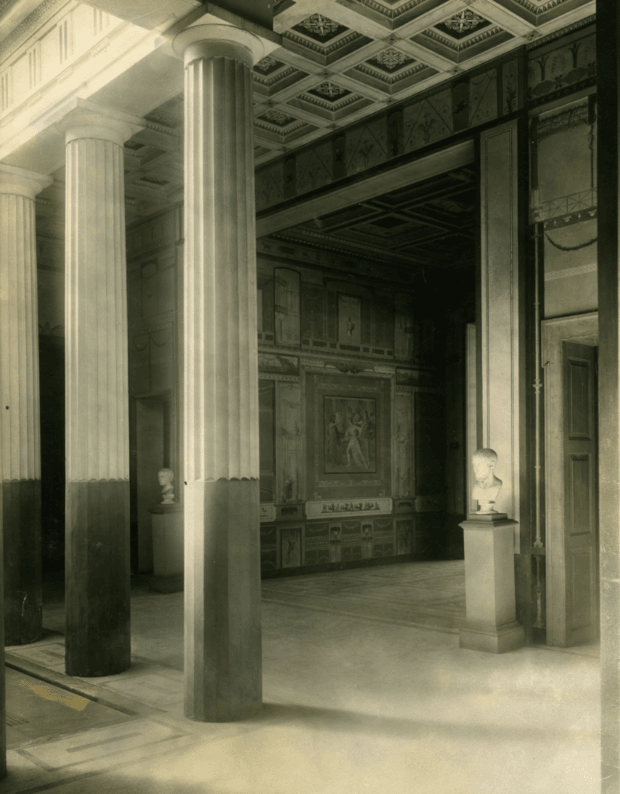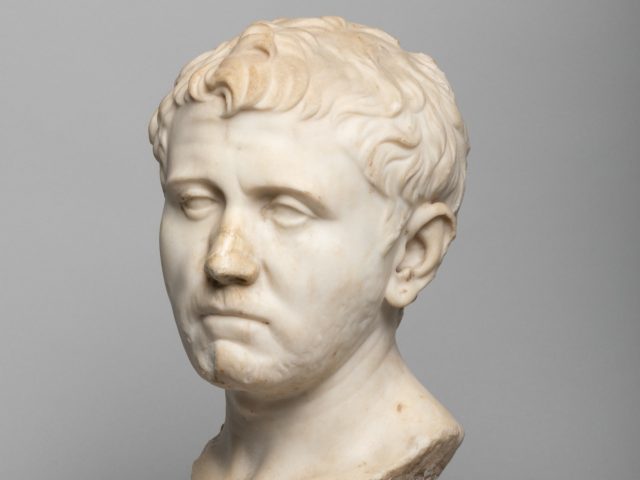An ancient Roman bust, last seen in Germany at the close of World War II, was recently discovered in Texas when an art collector purchased the relic at a Goodwill store for just $34.99.
In 2018, Texas art collector Laura Young stumbled across the marble relic underneath a table at a Goodwill store, the San Antonio Art Museum (SAMA) said in a press release. She purchased it for $34.99, the Art Newspaper reported. Young observed how old the sculpture looked, but little did she know that the piece was fashioned in either the first century B.C. or A.D. before it came into the possession of King Ludwig I of Bavaria centuries later.
She embarked on a journey to find the origins of the bust, seeking the expertise of classics and art history aficionados at the University of Texas Austin, in addition to auction houses throughout the United States, according to SAMA. Eventually, Jörg Deterling, a Sotheby’s consultant, identified the bust as an ancient Roman relic.
The bust was housed in the Pompejanum, a replica of a Pompeii villa in Aschaffenburg, Germany, that King Ludwig I had an architect build between 1840-1848, SAMA noted.
However, allied bombers targeted the German town during World War II, and the Pompejanum was severely damaged. “After the war, the United States Army established various military installations in Aschaffenburg, many of which remained until the end of the Cold War,” and it is thought that an American soldier brought the piece home to Texas, according to SAMA.

The bust had once resided inside a full-scale model of a house from Pompeii in Aschaffenburg, Germany. Somehow, it ended up at Goodwill in Texas – and sold for just $34.99. (SAMA)
As the piece was illegally taken, Young could have faced severe legal penalties if she had attempted to sell it, Attorney Leila Amineddoleh told the Art Newspaper.
“US law doesn’t recognize the transfer of title when theft is involved,” Amineddoleh explained. “I advised Laura not to sell it, either publicly or privately, that is, on the black market. She risked expensive legal battles or criminal penalties if she tried.”
Deterling facilitated contact between Young and German officials.
“There were a few months of intense excitement after that, but it was bittersweet since I knew I couldn’t keep or sell the (bust),” Young told SAMA. “Either way, I’m glad I got to be a small part of (its) long and complicated history, and he looked great in the house while I had him.”

The bust sat in a display called Pompejanum, which was built by Ludwig I of Bavaria, and during World War II, severely damaged by Allied bombers. The bust disappeared soon after. (SAMA)
The Bavarian Administration of State-Owned Places, Gardens, and Lakes is allowing the work to be displayed at SAMA through May of next year.
Emily Ballew Neff, the Kelso Director at SAMA, highlighted the rich history associated with the piece.
It’s a great story whose plot includes the World War II-era, international diplomacy, art of the ancient Mediterranean, thrift shop sleuthing, historic Bavarian royalty, and the thoughtful stewardship of those who care for and preserve the arts, whether as individuals or institutions. We are so pleased that the Bavarian Administration of State-Owned Palaces agreed to allow us to have the sculpture on view at SAMA before it returns to its rightful home.
It is not known for certain who is portrayed in the bust, but SAMA notes that it may be Pompey the Great’s son. Pompey, who lived between 106-48 B.C., lost a Civil War to Julius Caeser, according to the museum.

COMMENTS
Please let us know if you're having issues with commenting.